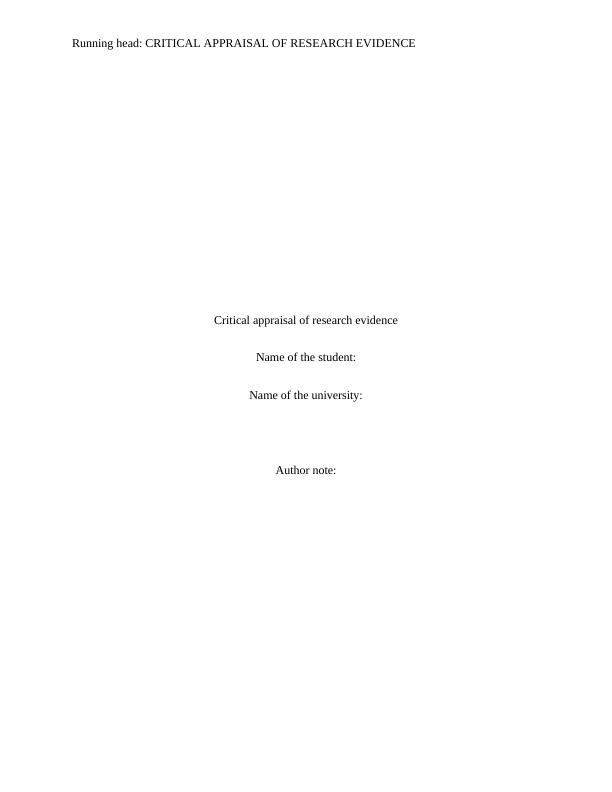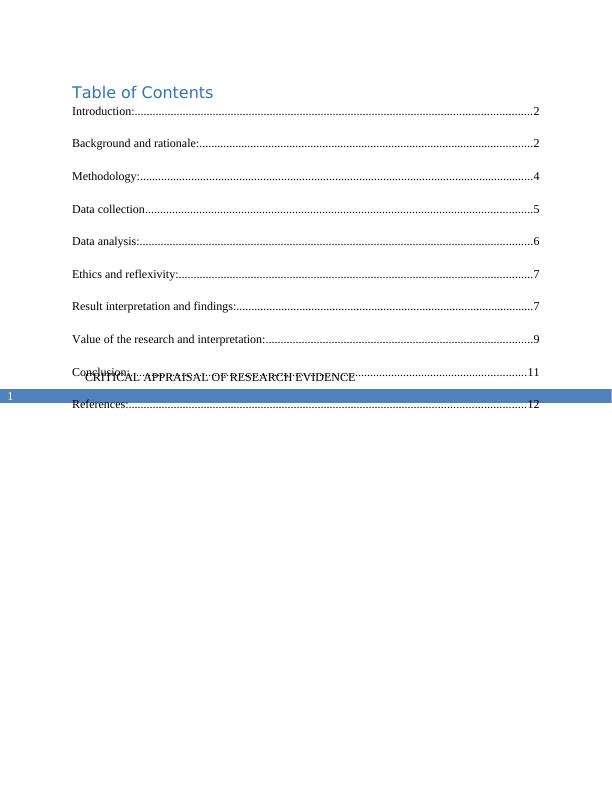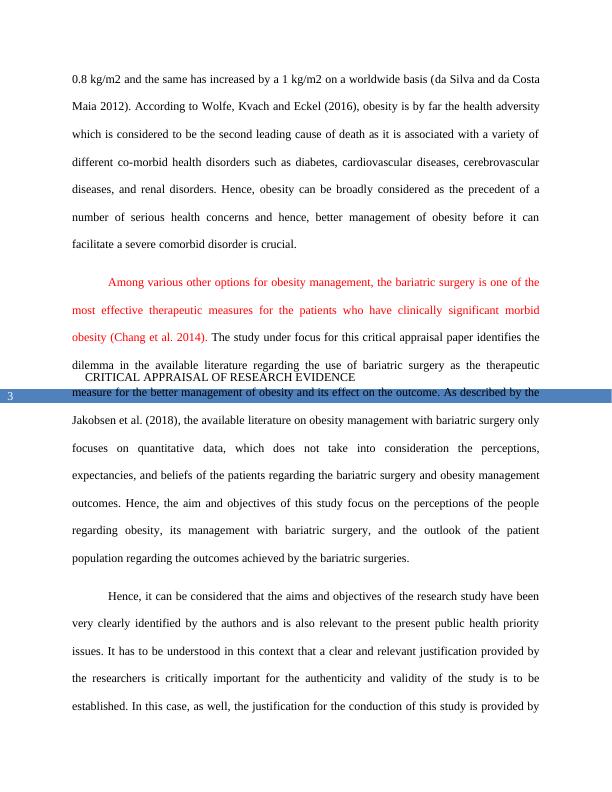Critical Appraisal of Research Evidence
Added on 2021-05-31
15 Pages4360 Words112 Views
Running head: CRITICAL APPRAISAL OF RESEARCH EVIDENCECritical appraisal of research evidenceName of the student:Name of the university:Author note:

CRITICAL APPRAISAL OF RESEARCH EVIDENCE1Table of ContentsIntroduction:....................................................................................................................................2Background and rationale:...............................................................................................................2Methodology:...................................................................................................................................4Data collection.................................................................................................................................5Data analysis:...................................................................................................................................6Ethics and reflexivity:......................................................................................................................7Result interpretation and findings:...................................................................................................7Value of the research and interpretation:.........................................................................................9Conclusion:....................................................................................................................................11References:....................................................................................................................................12

CRITICAL APPRAISAL OF RESEARCH EVIDENCE2da Silva, S.S.P., and da Costa Maia, Â., 2012. Obesity and treatment meanings in bariatricsurgery candidates: a qualitative study.Obesity surgery,22(11), pp.1714-1722.Introduction: Evidence-based practice has become one of the greatest needs for the practice of healthcare professionals. In order to be able to competently utilize the benefits of evidence-basedpractice, it is crucial for the healthcare professionals to be able to understand the literature valueof an article and critically analyse it (Zeng et al. 2015). This study will attempt to take the aid ofthe CASP or Critical appraisal skills program tool in order to critically appraise the study by theda Silva and da Costa Maia. The selection of the CASP tools is based on the applicative benefitsassociated with it. CASP tool allows the researchers with a standardized template formatencompassing a systematic, strategic and methodological steps to analyse a research evidencebefore utilizing it in the practice. Along with that a CASP tool has differentiated checklist fordifferent research designs or methods which allows to critically analyze with minimal bias.Additionally, impartial set of factors and elements allows the biased opinion of the researchers tobe eliminated as well (Buccheri and Sharifi 2017).Background and rationale:One of the greatest health concerns all over the globe is the prevalence of obesity and theever-increasing incidence rate of the obesity among the target groups (Ejima, Aihara andNishiura 2013). It has to be mentioned in this context that for most of the first world countries,obesity is an alarming public health priorities and it has become very difficult to control the ever-rising prevalence of this disease. The prevalence of obesity has enhanced at a frightening ratesince the last couple of years all over the world. The alarming statistical data suggests the factthat within the time period of 1998 to 2008, the mean body mass index of men has enhanced by

CRITICAL APPRAISAL OF RESEARCH EVIDENCE30.8 kg/m2 and the same has increased by a 1 kg/m2 on a worldwide basis (da Silva and da CostaMaia 2012). According to Wolfe, Kvach and Eckel (2016), obesity is by far the health adversitywhich is considered to be the second leading cause of death as it is associated with a variety ofdifferent co-morbid health disorders such as diabetes, cardiovascular diseases, cerebrovasculardiseases, and renal disorders. Hence, obesity can be broadly considered as the precedent of anumber of serious health concerns and hence, better management of obesity before it canfacilitate a severe comorbid disorder is crucial. Among various other options for obesity management, the bariatric surgery is one of themost effective therapeutic measures for the patients who have clinically significant morbidobesity (Chang et al. 2014). The study under focus for this critical appraisal paper identifies thedilemma in the available literature regarding the use of bariatric surgery as the therapeuticmeasure for the better management of obesity and its effect on the outcome. As described by theJakobsen et al. (2018), the available literature on obesity management with bariatric surgery onlyfocuses on quantitative data, which does not take into consideration the perceptions,expectancies, and beliefs of the patients regarding the bariatric surgery and obesity managementoutcomes. Hence, the aim and objectives of this study focus on the perceptions of the peopleregarding obesity, its management with bariatric surgery, and the outlook of the patientpopulation regarding the outcomes achieved by the bariatric surgeries. Hence, it can be considered that the aims and objectives of the research study have beenvery clearly identified by the authors and is also relevant to the present public health priorityissues. It has to be understood in this context that a clear and relevant justification provided bythe researchers is critically important for the authenticity and validity of the study is to beestablished. In this case, as well, the justification for the conduction of this study is provided by

End of preview
Want to access all the pages? Upload your documents or become a member.
Related Documents
Systematic Review Reportlg...
|13
|3105
|12
